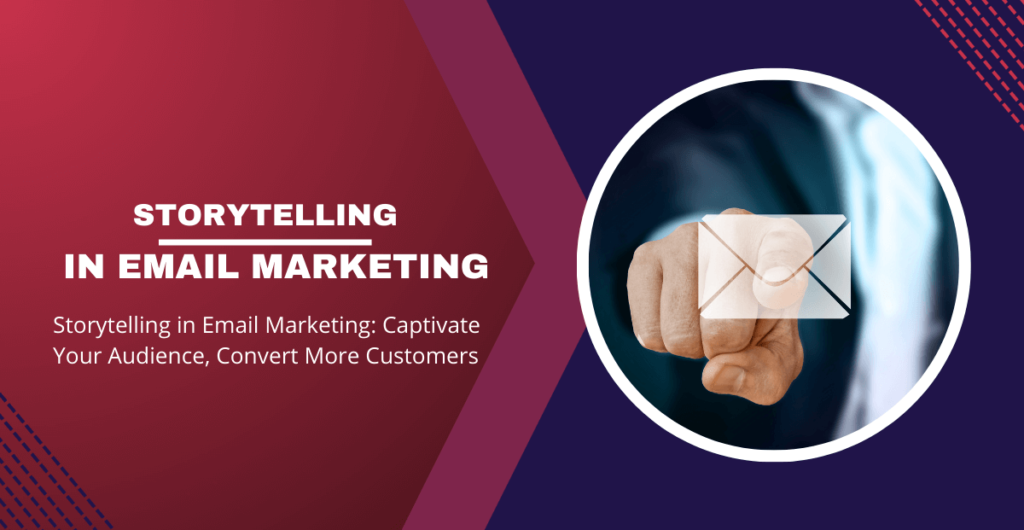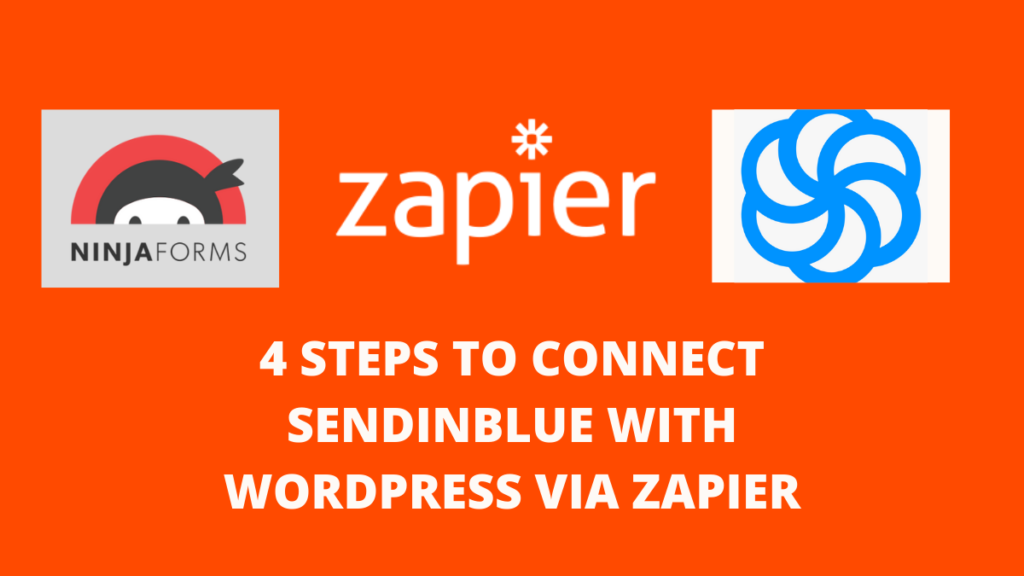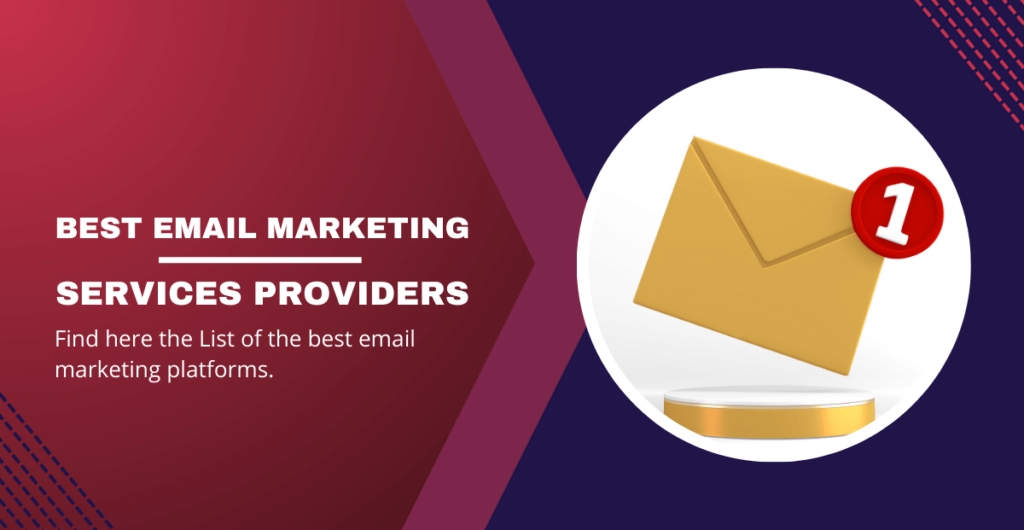Email marketing often feels like shouting into the void in a fast-paced, ever-expanding digital landscape. Inboxes overflow, attention spans dwindle, and promotional messages saturate every corner.
Yet, amid this digital cacophony, a glimmer of hope shines through the narrative.
According to research, storytelling in marketing can increase conversions by 30%.
These are not fancy metrics but the tangible magic woven by storytelling into email marketing.
People like you, marketers and business leaders, understand this struggle. You put your heart and soul into developing campaigns, but engagement remains elusive.
You yearn to connect with your audience, build relationships that transcend transactions, and differentiate your brand in an ever-widening sea of similarities.
But fear not, fellow word weavers! Storytelling isn't just for campfire parties and fairy tales.
It's a powerful tool, a secret weapon in your marketing arsenal, just waiting to be wielded masterfully.
Storytelling in email marketing isn't about sprinkling anecdotes like confetti.
It's about weaving narratives that resonate and tap into human desire for connection, meaning, and emotional engagement.
It's about creating experiences, not just sending messages.
Ready to dive into email storytelling? Fasten your seatbelt, and let's explore the anatomy of a captivating narrative email packed with semantic keywords and phrases to satisfy the SEO gods.
What is Storytelling in Email Marketing?
Email marketing storytelling is about building emotional connections with your audience. Craft captivating stories, weave them into your email structure, and watch your engagement, loyalty, and sales soar!
Imagine your emails as captivating stories, not just bland broadcasts.
This superpower, called storytelling, can make your audience feel, connect, and take action. Forget random quotes and facts – weave a narrative that touches their hearts!
Why are stories so powerful? They spark emotions, make you care, and feel not alone. You build a lasting bond by crafting stories about your audience's desires, struggles, or dreams.
Think of your emails as chapters in a story. Each email builds on the last, keeping readers hooked and wanting more.
It's not just adding random anecdotes; it's a carefully planned plot unfolding over time.
So, what are the benefits of this storytelling magic?
- More clicks and more love: People love emotional stories. It will boost your email performance big time!
- Brand buddies for life: Customers become loyal fans by connecting with your brand's values through stories. That's brand loyalty gold!
- From reader to buyer: Compelling stories can tip the scales and turn customers into paying fans. Emotion is the real power!
- Happy customers, happy business: By delivering engaging stories throughout their journey, you keep customers returning for more. That's how you build lasting relationships and boost your bottom line.
Remember, some storytelling magic comes a long way in turning email marketing into a powerful bond-building tool.
So, go forth and tell your brand's story!
best storytelling practices for email marketing
1. Hook
A compelling email story starts with a strong hook that grabs the reader's attention and entices them to keep reading. Here are some practical tips for creating an effective hook:
- Start with a captivating question or statement: Pose a thought-provoking question or make a bold statement that sparks curiosity in your readers.
Example: “Are you tired of feeling overwhelmed by your never-ending to-do list?”
- Use vivid imagery: Paint a picture in your reader's mind using descriptive language that appeals to their senses.
Example: “Imagine yourself lounging on paradise's white sandy beaches, sipping cocktails while your business runs smoothly without you.”
2. Conflict
To keep readers engaged, introduce a conflict or challenge the protagonist (your target audience) faces. Here's how to effectively present this element:
- Identify common pain points: Understand the common struggles and challenges your target audience faces and address them directly.
Example: “Do you struggle to meet deadlines due to constant interruptions throughout the day?”
- Share relatable stories or testimonials: Incorporate real-life examples or customer testimonials that demonstrate others' challenges, making them more relatable for readers.
Example: “Just like Sarah, one of our clients juggles multiple projects and constantly firefighting urgent tasks…”
3. Transformation
In the transformation stage, you describe how the protagonist overcomes and learns from the challenge. Consider these tips when crafting this part of your email story:
- Highlight solutions or strategies: Introduce actionable advice, techniques, or tools that can help resolve the conflict presented earlier.
Example: “By implementing time-blocking techniques and setting clear boundaries, Sarah regained control over her schedule.”
- Showcase before-and-after scenarios: Illustrate how things have improved for individuals who have successfully overcome similar obstacles using specific strategies.
Example: “Sarah transformed from feeling overwhelmed and stressed to focusing on high-priority tasks and spending quality time with her family.”
4. Resolution
The resolution is the final part: you tie everything together and provide a call to action. Consider these tips for wrapping up your email story effectively:
- Connect the transformation to your product or service: Explain how your offering can help readers achieve similar transformations.
Example: “Our productivity tool, XYZ, can help streamline your workflow, prioritize tasks, and free up valuable time so that you can enjoy the same level of success as Sarah did.”
- Provide a clear call to action (CTA): Directly ask readers to take a specific action, such as signing up for a free trial, downloading an e-book, or scheduling a consultation.
Example: “Click here to start your free trial now and experience our productivity tool's transformative power!”
Remember that each element should flow seamlessly into the next, creating a cohesive and engaging story that resonates with your audience.
Storytelling in Action: Case Studies and Examples
The dusty shelf of traditional marketing tactics gathers cobwebs. In its place, brands are embracing storytelling in email marketing, crafting narratives that captivate, connect, and ultimately convert.
Let's delve into the real-world magic of email storytelling through compelling case studies and examples:
Case Study #1: Airbnb's “Host Stories”
- Story Type: Customer Stories
- Approach: Airbnb spotlights ordinary hosts and their unique homes, weaving tales of adventure, human connection, and cultural exchange.
Results:
- Increased engagement: Personalized narratives resonated, leading to 25% higher open rates and 30% higher click-through rates.
- Boosted brand perception: Airbnb transformed from a booking platform to a community facilitator, strengthening brand loyalty and trust.
Case Study #2: Patagonia's “Environmental Advocacy” Emails
- Story Type: Brand Mission Story
- Approach: Patagonia integrates environmental activism into email narratives, showcasing its dedication to sustainability through powerful storytelling.
Results:
- Increased brand affinity: Customers felt connected to Patagonia's values, leading to a 15% increase in brand loyalty and purchase intent.
- Positive social impact: Emails drove awareness and engagement with environmental campaigns, increasing donations and volunteer sign-ups.
Key Takeaways:
- Storytelling isn't one-size-fits-all: Identify your brand voice and target audience to tailor your narrative approach.
- Data is your friend: Track engagement metrics to understand what resonates and optimize future campaigns.
- Authenticity is key: Don't abandon your brand's essence and values. Let your story shine through!
These case studies are just a glimpse into email storytelling's vast potential.
By harnessing narrative power, you can build genuine connections with your audience, differentiate your brand, and ultimately drive results.
So, unlock your inner storyteller, craft your brand's unique narrative, and watch your email marketing magic unfold.
Remember, the finest stories are still waiting to be told. Start weaving today!
Overcoming Common email story Mistakes
Even the most seasoned storytellers can stumble into narrative traps.
But fear not, brave email weavers!
Recognizing and slaying these common pitfalls will capture your email stories, not crash and burn.
The scatterbrain:
A story with no focus is like a ship without a rudder. Lack of clarity leaves your readers unsure of your message.
Solution:
- Define your central theme and ensure every element supports it.
- Tighten your narrative arc.
- Eliminating tangents and unnecessary details.
The pushy salesperson:
Bombarding readers with blatant sales pitches is like interrupting a captivating movie with a commercial.
Solution:
- Weave your brand and offer into the narrative organically.
- Show, don't tell, how your product or service solves the protagonist's (your customer's) problem.
- Let the story's emotional impact guide the call to action, not vice versa.
The Voice of the Chameleon:
Inconsistent voice and messaging create brand confusion, leaving your audience unsure of who you are.
Solution:
- Develop a consistent brand voice across all your marketing channels, including emails.
- Use vivid language and storytelling elements that resonate with your brand's personality.
The Cliché Crusader:
Clichéd narratives are like stale bread – bland and forgettable.
Solution:
- Inject originality!
- Draw inspiration from your brand's unique experiences, customer stories, and industry insights.
- Craft fresh, unexpected narratives that reflect your brand's authentic voice.
The Boredom Beast:
A dull story is a one-way ticket to the “unsubscribe” button.
Solution:
- Infuse your narrative with energy and emotion.
- Use sensory details, vivid imagery, and humor to engage your audience.
There is no end to slaying these storytelling monsters.
Experiment with, analyze, and refine your narrative with each email campaign.
And most importantly, never stop weaving captivating stories that resonate with your audience because, in email marketing, storytelling is your magic wand.
Tools and Resources for Storytelling in Email Marketing
Consider this your enchanted arsenal, ready to fuel your email storytelling prowess.
Story prompts and templates:
- Unleash your inner creativity with AI-powered storytelling platforms like Jasper AI or WriteCream. These tools can help you generate story ideas, outline, and draft email copy based on your brand and target audience.
- Kickstart your creativity with pre-built templates. Email marketing services like MailerLite and ConvertKit offer free templates that provide a solid foundation. This allows you to customize the story with your unique brand voice and message.
Data Storytelling Magic:
- Measure the impact of your storytelling with tools like MailerLite‘s A/B testing features. Analyze open rates, click-through rates, and conversions to see what resonates with your audience.
- Transform data into captivating narratives with platforms like Flourish or Infogram. You can visualize data engagingly, creating suspense and drawing readers deeper into your story.
Building Brand Trust with Email Storytelling:
- Gather inspiration and feedback from thriving online communities dedicated to email marketing and storytelling.
Bonus Tools:
- Grammarly: Ensure your writing is polished and error-free, preserving your story's magic.
- Canva: Design stunning visuals to complement your email narratives, enhancing emotional impact.
You can weave magic into your email stories, so write forth.
Conclusion
Storytelling in email marketing isn't just a tactic; it's a portal to brand loyalty, emotional resonance, and skyrocketing engagement.
It separates you from the crowd, etching your brand into hearts, not just inboxes.
It is important to remember that magic thrives on authenticity, personalization, and constant tweaking.
Let go of the templates, embrace your customers' individual colors, and experiment! Your first captivating email is waiting to be crafted.
Start today.
Make your campaigns enchanting chapters, and watch your audience fall under your brand's spell.


